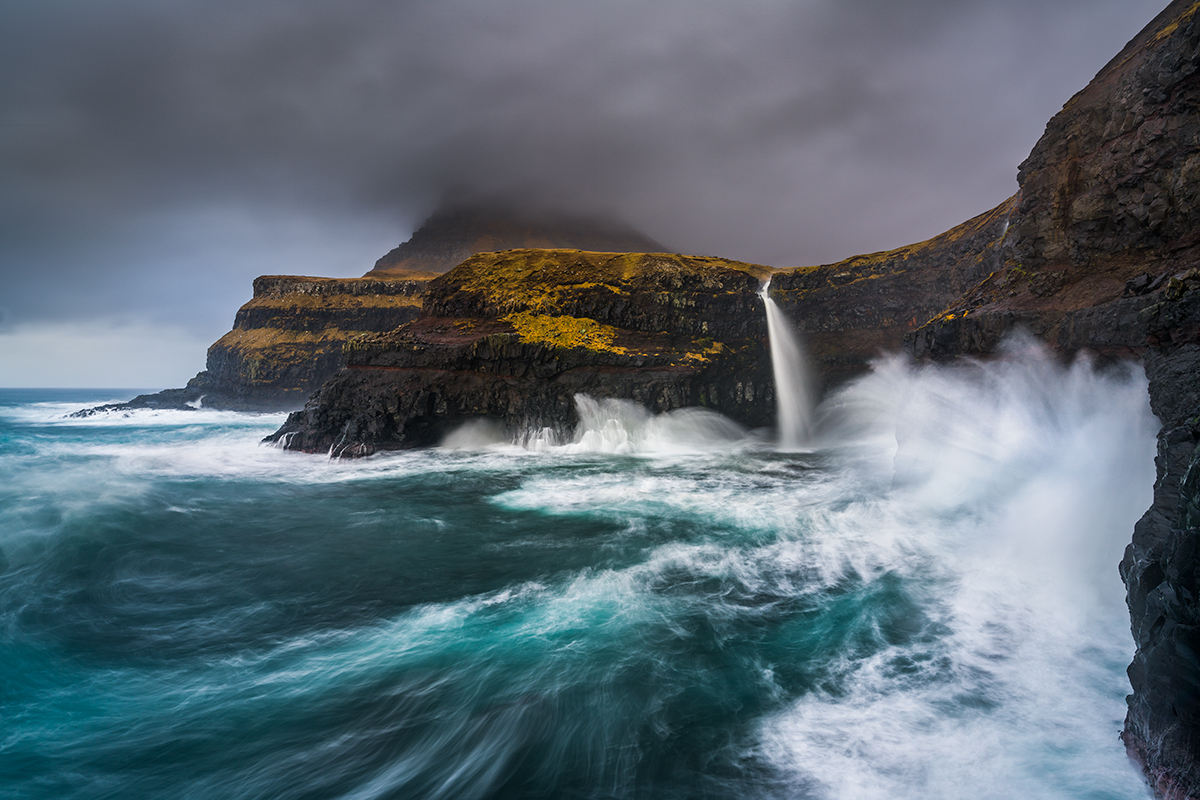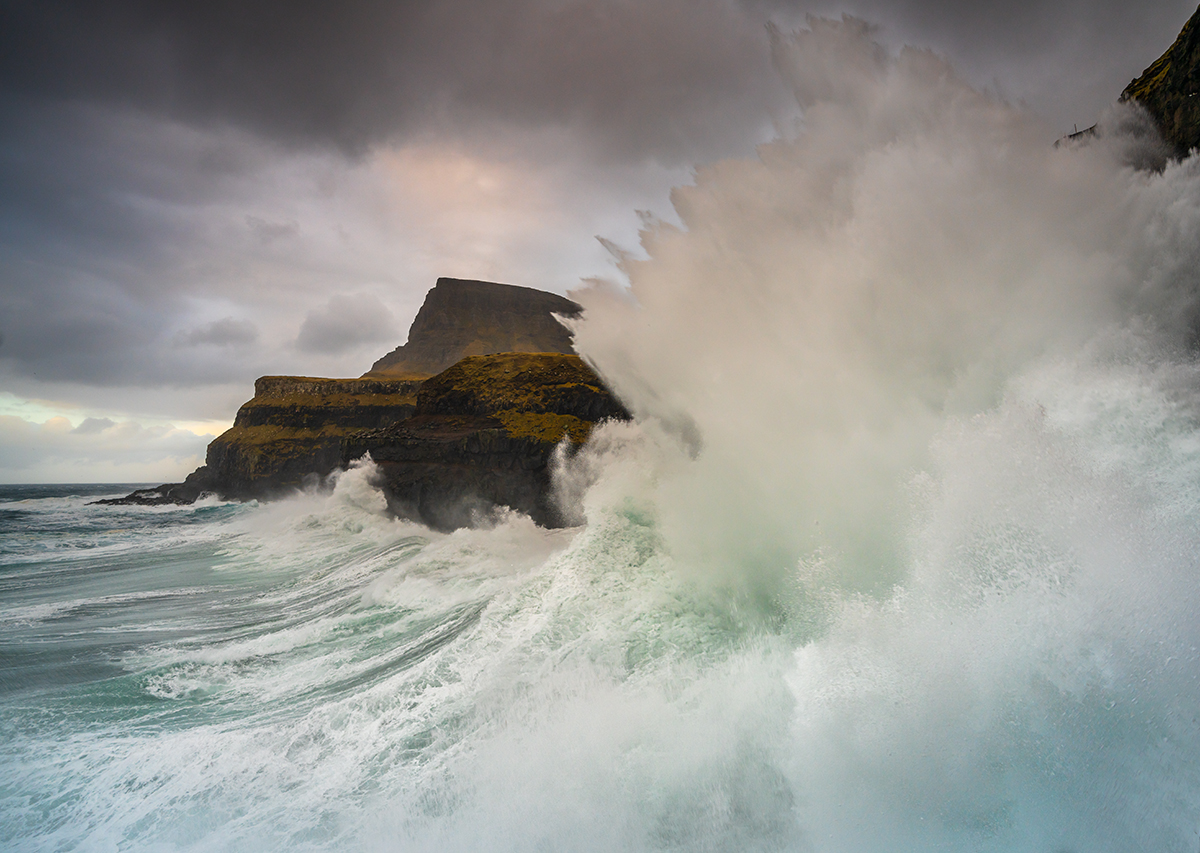
En español más abajo.
It is almost a decade since I first visited the Faroe Islands. I had the opportunity to make a visit of a few days taking advantage of a stopover in the port of Tórshavn of the ship that was taking me to Iceland.
At that time globalisation had not yet reached its peak, which meant that there was hardly any tourism and therefore not much accommodation available. During the whole time I was in the archipelago I didn’t meet any photographers. I was able to explore some of the islands by walking freely and alone on their trails and finding locations that today are featured in almost every guide.
The situation has changed a lot since then. The eagerness to visit places with little traffic and far from large population centres has made the Faroe Islands an increasingly coveted destination, and we nature photographers have not been immune to this trend. This has had positive consequences, such as an increase in the supply of accommodation, but has also led to less desirable effects such as limited access to many of the islands’ most interesting viewpoints. As most of the land is private, many landowners have sought to protect hikers by charging disproportionate fees for access to the roads leading to the most visited sites. In some cases it is compulsory for excursions to be guided and they may have more or less fixed schedules. I don’t know what will be happening in the middle of the pandemic, but it is probably a good time for all of us to reflect on this type of situation that is already happening in many other destinations around the world due to excessive pressure from tourism.
During Christmas 2019 I visited the islands again, determined to photograph their wonderful landscapes in the middle of winter, when the Atlantic storms lash their dizzying cliffs with uncontrollable fury.
I planned the trip months in advance and it was during this period that access restrictions were applied to most of the most popular excursions, which in many cases ended up being banned during the winter season.
Given this situation, I decided to focus on one of the areas I had visited years before and where I had already had the opportunity to study different perspectives. I firmly believe that it is not necessary to resort to processing tricks to create images of high visual and emotional impact. Unfortunately, many photographers have decided to embrace technology and especially advances in processing software as a major source of creativity. In the same way that the seven musical notes can be mixed in infinite ways to compose an endless variety of melodies, I believe that the combination of light and composition will continue to offer inexhaustible possibilities to present and future generations of photographers.
With this ever-present idea in mind, I was visiting the Múlafossur waterfall, which falls directly into the ocean in one of the most epic landscapes I know. Surprisingly, even in the middle of winter, photographers come in great numbers to get their own version of this waterfall with the picturesque village of Gásadalur in the background. What I thought was an amazing image years ago ended up becoming a postcard sold in a souvenir shop and stopped motivating me long ago.
To force me to break my own inertia, I tried alternative perspectives, lights at different times of the day, with clear or overcast skies, long exposures or very fast shutter times to freeze the strong waves. The result was a collection of images that reflect different aspects of the personality of this unique landscape seen with different eyes and mindset.
The one I show you is a photograph taken one afternoon with strong waves using a long exposure. My intention was to take advantage of the traces left by the waves as they approached the cliff and the wake of the foam as the sea exploded against the rock. The combination of a point of view so far below the level of the upper edge of the wall, together with the lines produced by the waves, create an effect of strong dynamism. The low cloud that covers the top of the mountain adds drama and mystery to the whole.
This image has been awarded an honourable mention in the GDT European Wildlife Photographer of the Year 2020 in the category of landscape.

The waves when they broke could reach 20 m high and wet me on numerous occasions, forcing me to constantly dry my equipment and making it really difficult to take pictures. Al romper las olas podían llegar a los 20 metros de altura me mojaron en numerosas ocasiones, obligándome a secar constantemente mi equipo y haciendo realmente difícil la toma de imágenes.
Hace casi una década que visité por primera vez las islas Faroe. Tuve la ocasión de hacer una visita de unos días aprovechando una escala en el puerto de Tórshavn del barco que me llevaba a Islandia.
En aquellos momentos la globalización todavía no había llegado a su apogeo, lo que suponía que casi no había turismo y por lo tanto tampoco se encontraban demasiadas ofertas de alojamiento. Durante todo el tiempo que estuve en el archipiélago no me encontré con ningún fotógrafo. Pude explorar algunas de sus islas caminando libre y en solitario por sus senderos y encontrando por mi mismo localizaciones que hoy ya aparecen en casi todas las guías.
La situación ha cambiado mucho desde entonces. La avidez por visitar lugares poco transitados y alejados de los grandes núcleos de población, han convertido a las Faroe en un destino cada vez más codiciado, y los fotógrafos de naturaleza no hemos sido ajenos a esta tendencia. Esto ha tenido consecuencias positivas, como por ejemplo el incremento de la oferta de alojamientos, pero también ha provocado efectos menos deseables como la limitación de acceso a muchos de los miradores más interesantes de las islas. Dado que la mayor parte de las tierras son privadas, muchos propietarios se han escudado en la seguridad de los excursionistas para cobrar unas desproporcionadas tarifas de acceso a los caminos que llevan a los enclaves más visitados. En algunos casos es obligatorio que las excursiones sean guiadas y pueden llegar a tener horarios más o menos fijos. Desconozco lo que estará ocurriendo en plena pandemia, pero probablemente sea un buen momento para que todos reflexionemos sobre este tipo de situaciones que se están dando ya en muchos otros destinos del mundo debido a la excesiva presión del turismo.
Durante la Navidad del 2019 visité de nuevo las islas, decidido a volver a fotografiar sus maravillosos paisajes en pleno invierno, cuando los temporales del Atlántico azotan con incontenible furia sus vertiginosos acantilados.
Planifiqué el viaje con meses de antelación y fue durante ese periodo cuando se aplicaron las restricciones de acceso a la mayor parte de las excursiones más frecuentadas, que en muchos casos llegaban a la prohibición de acceso en la temporada de invierno.
Dada la situación, decidí centrarme en una de las áreas que había visitado años atrás y en las que ya había tenido la oportunidad de estudiar diferentes perspectivas. Creo firmemente que no es necesario recurrir a trucos de procesado para crear imágenes de alto impacto visual y emocional. Desgraciadamente muchos fotógrafos han decidido abrazar la tecnología y en especial los avances en los programas de procesado como fuente principal de creatividad. De la misma manera que se pueden mezclar de infinitas maneras las siete notas musicales para componer una inabarcable variedad de melodías, pienso que la combinación de luz y composición seguirá ofreciéndonos inagotables posibilidades a las presentes y futuras generaciones de fotógrafos.
Con esta idea siempre presente, estuve visitando la cascada de Múlafossur, que cae directamente al océano en uno de los paisajes más épicos que conozco. Sorprendentemente incluso en pleno invierno los fotógrafos acuden en gran número para conseguir su propia versión de esta caída de agua con el pintoresco pueblo de Gásadalur al fondo. La que hace años me parecía una imagen sorprendente, terminó por convertirse en una postal de las que se venden en una tienda de souvenirs y hace tiempo que dejó de motivarme.
Para obligarme a romper mi propia inercia, probé perspectivas alternativas, luces a diferentes horas del día, con el cielo cubierto o despejado, largas exposiciones o tiempos de obturación muy rápido para congelar el fuerte oleaje. El resultado fue una colección de imágenes que reflejan distintos aspectos de la personalidad de este paisaje único visto con unos ojos y una mentalidad diferentes.
La que os muestro es una fotografía tomada una tarde con fuerte oleaje utilizando una larga exposición. Mi intención era aprovechar las trazas que dejaban las olas al aproximarse al acantilado y la estela de la espuma al explotar el mar contra la roca. La combinación de un punto de vista tan por debajo del nivel del borde superior de la pared, unido a las líneas producidas por el oleaje crean un efecto de fuerte dinamismo. La nube baja que cubre la cima de la montaña añade el drama y el misterio al conjunto.
Esta imagen ha sido premiada con una mención de honor en el GDT European Wildlife Photographer of the Year del 2020 en la categoría de paisaje.